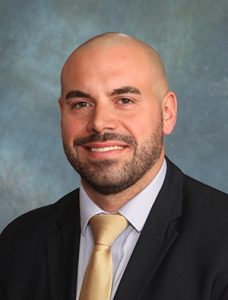A Case for Safe Routes to School
August 31, 2016 | Blog
by David Calderetti, NJPHK-Vineland
 Creating safe, convenient, and fun opportunities for children to bicycle and walk to and from schools daily is the mission of Safe Routes to School (SRTS). SRTS has two goals: increase the number of children that can safely walk and bike to school, and make additional infrastructure improvements in those areas where it is not safe to walk and bike to school. Through the institution of a comprehensive SRTS program, the impact can be far-reaching beyond a school setting.
Creating safe, convenient, and fun opportunities for children to bicycle and walk to and from schools daily is the mission of Safe Routes to School (SRTS). SRTS has two goals: increase the number of children that can safely walk and bike to school, and make additional infrastructure improvements in those areas where it is not safe to walk and bike to school. Through the institution of a comprehensive SRTS program, the impact can be far-reaching beyond a school setting.
Last year, NJPHK-Vineland (NJPHK-V) and its partners received a $275,000 grant to improve the infrastructure around Gloria M. Sabater Elementary School making the environment safer for walkers and bikers. Recently, we applied for another grant to continue the process of creating safe travel corridors for children who walk along Landis Avenue.
With the rise in childhood obesity and the safety ramifications of increased motor vehicle traffic to the school sites, Safe Routes to Schools is even more critical. According to the Centers for Disease Control and Prevention (CDC), childhood obesity has more than doubled in children and quadrupled in adolescents over the past three decades; similarly, childhood inactivity has also been on the rise. Since 1969, almost 35% fewer children walk or bike to school. There are many reasons for the decrease in children walking and biking to school, which include: distance, traffic related concerns, crime, and weather. Fortunately, SRTS is a flexible program that can be developed to alleviate these concerns.
Due to a decrease in children walking and biking to school, many school districts are forced to deal with growing traffic congestion at arrival and dismissal times. Not only is this a safety issue, but it can also be a financial burden, as the existing school infrastructure may not have been built to support motor vehicle traffic on-site. In rural, suburban, and urban communities, queuing lanes have been instituted to address this issue. Although queuing lanes help to displace traffic, idling vehicles emit pollutants that can trigger asthmatic incidents and the queue can also block the line of sight for drivers when approaching a crosswalk.
For more information on SRTS, visit www.saferoutesnj.org. There are representatives throughout the state of New Jersey that can assist you in developing a program for your community.
David Calderetti is project director for Cumberland Cape Atlantic YMCA and project manager for New Jersey Partnership for Healthy Kids-Vineland
SHARE:
Contact Us: 609-278-9622
Follow Us On: